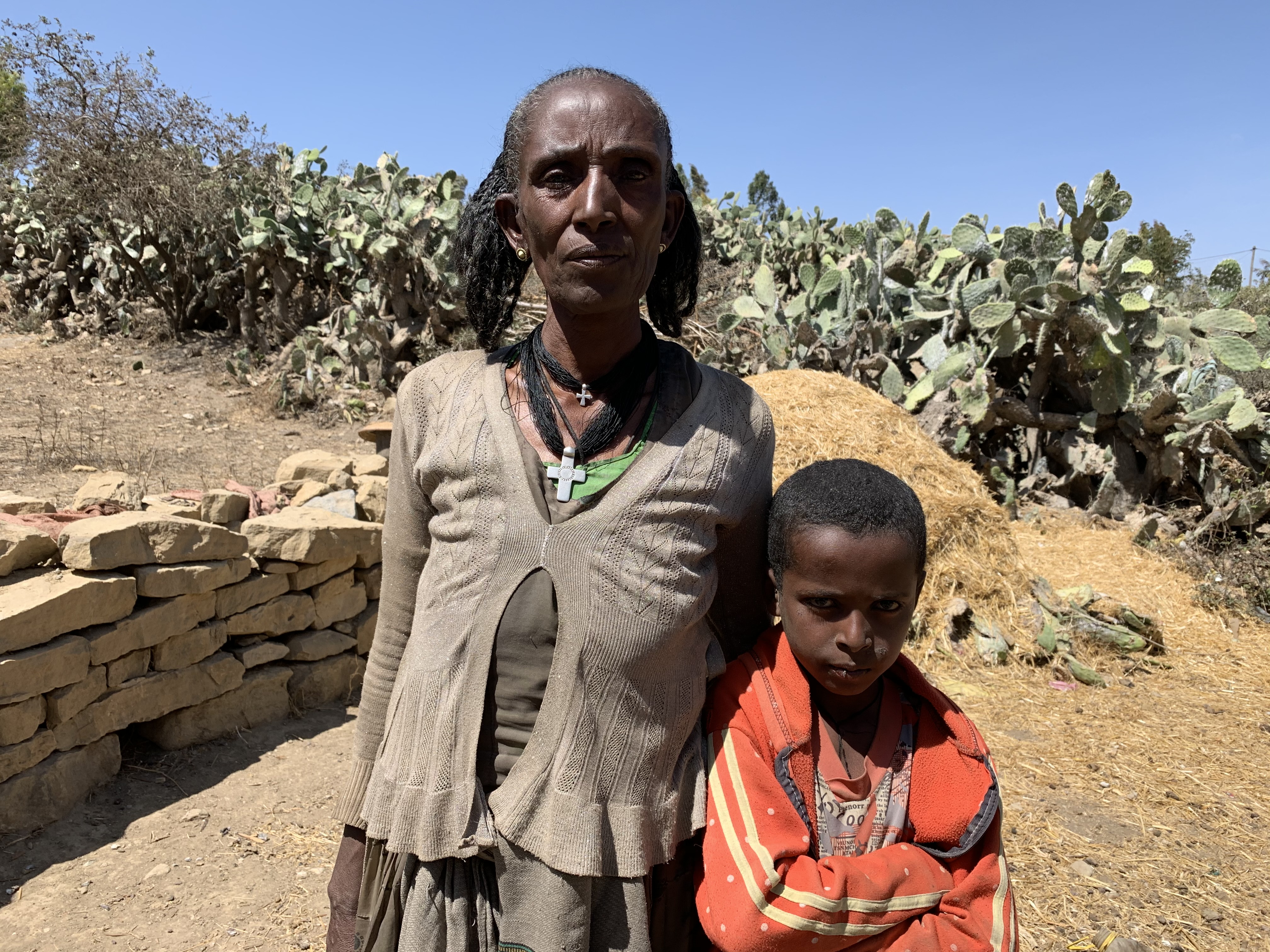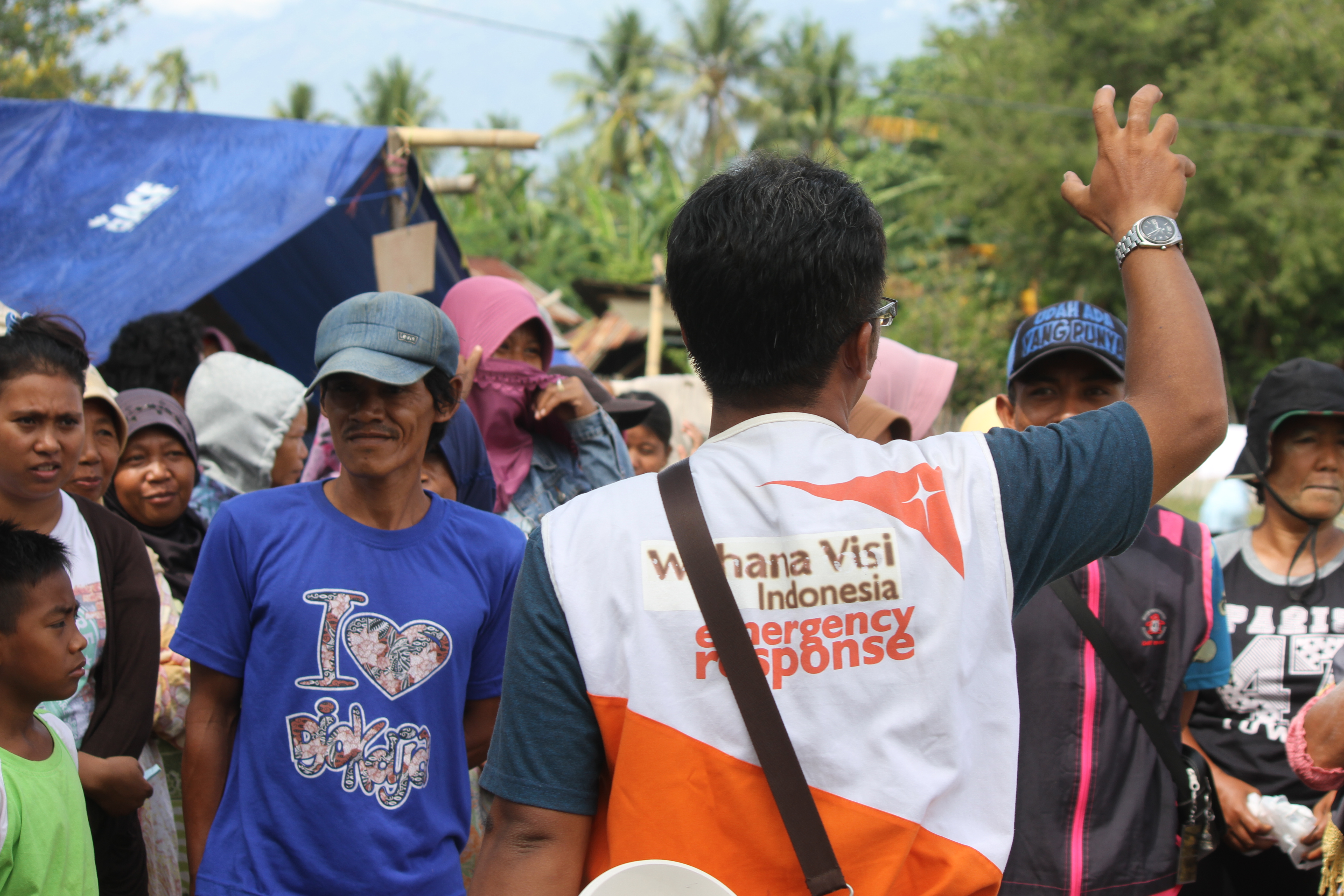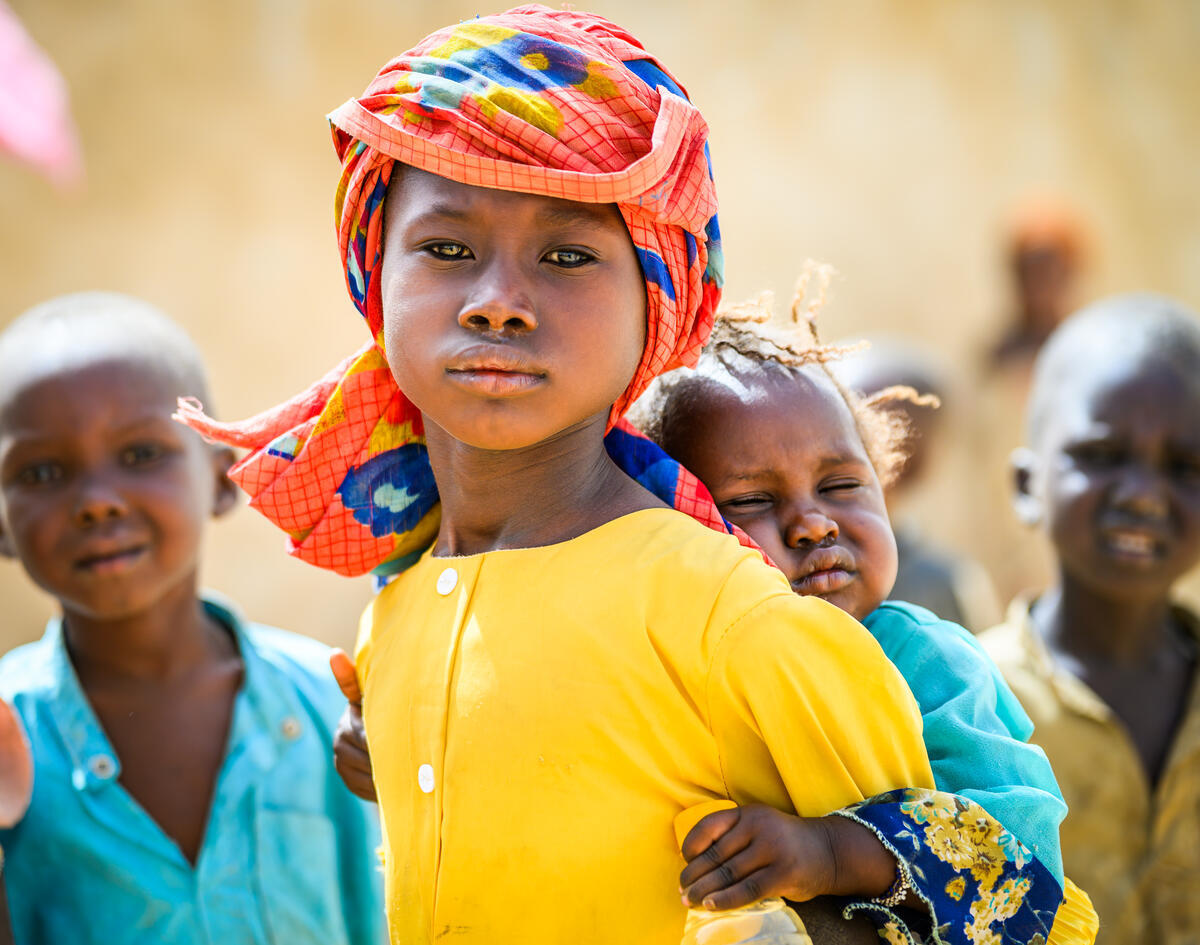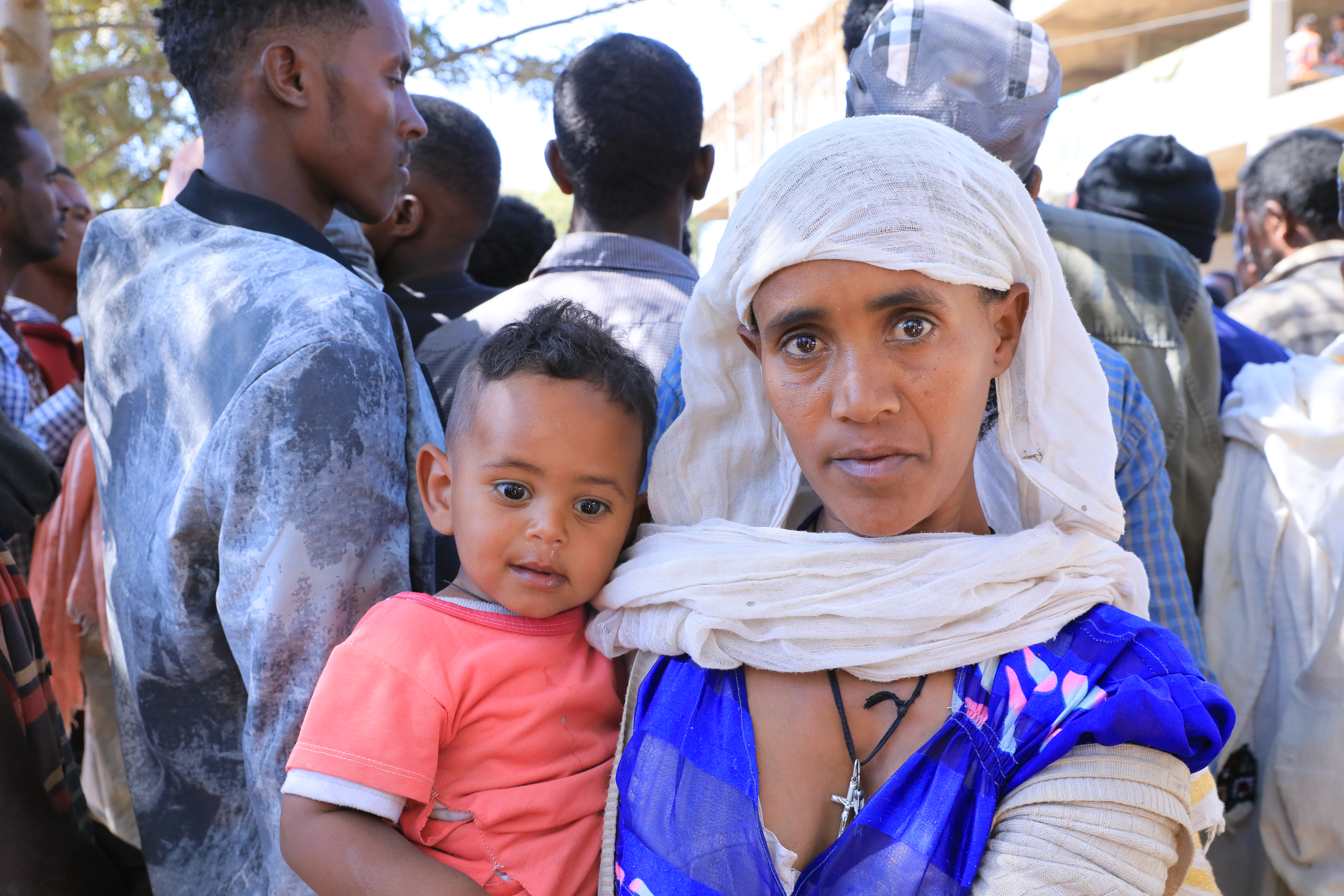
Triple crisis in Tigray
Conflict, COVID-19 and clouds of locusts
Dire situation for mothers and children
It's been months since fighting broke out in Tigray, one of the poorest regions in Ethiopia. And even after a fair harvest, hundreds of thousands rely on food assistance here. As the conflict started there were already more than a million people in the region relying on aid, and more than 600,000 grappling with hunger.
To make an already difficult situation harder, COVID-19 and desert locust infestation further hindered the ability of families to provide for even their basic needs. The conflict, which displaced hundreds of thousands, only made things even more difficult.
According to UNICEF’s situation report from January 14, 2021, 4.5 million people need emergency food assistance in Tigray - as many as 2.3 million of whom are children.
From conflict to food crisis
Leges (pictured above), a 30-year-old mother of six, is among those who have been displaced. Together with her six children, she hid in the forest for six days before making the six-day walk to safety, along with many others. She suffered greatly on the way to Shire, where she is currently living in an Internally Displaced People (IDP) camp.
“I just rushed to flee, leaving behind my house and all my property to save my children’s and my lives. I hope one day we would be back in our home,” she says, explaining how the cold weather, lack of sleep and lack of food is affecting her and her children. "I came here expecting at least to get food, water and shelter. Unfortunately, I am getting little or no food,” she adds.
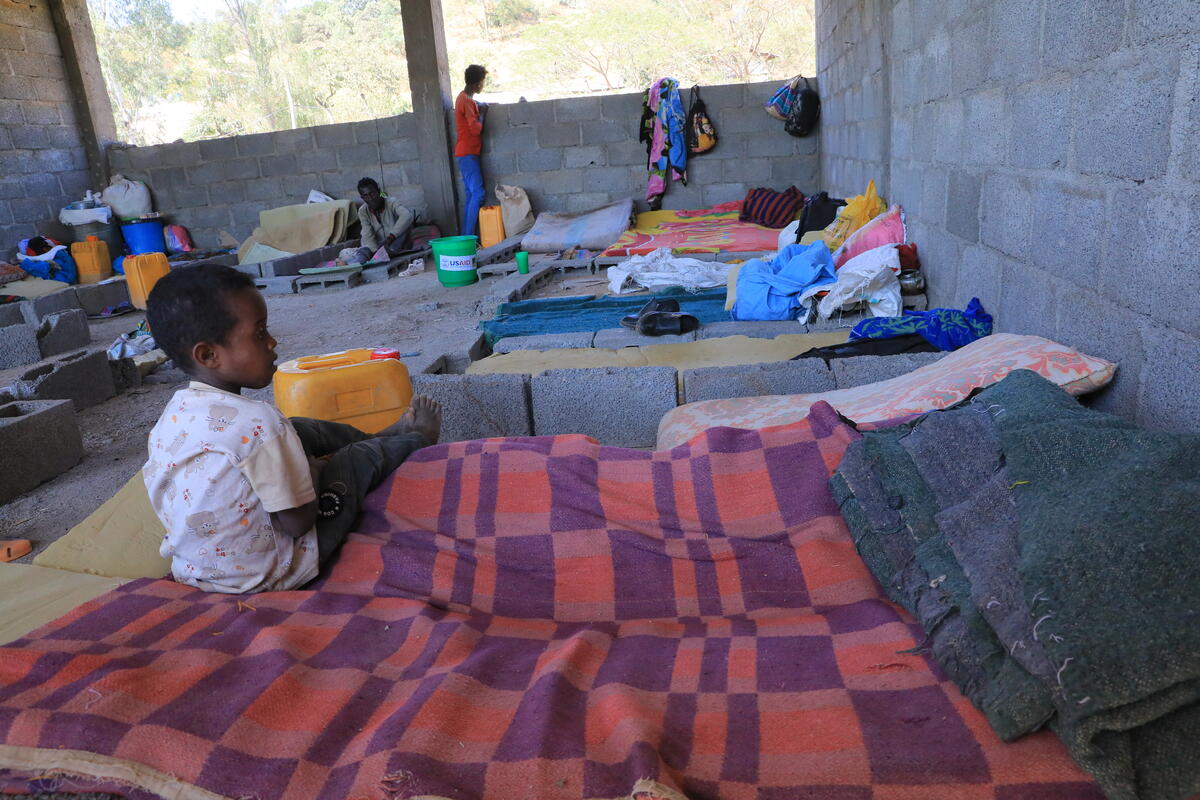
Begging for food
Currently, thousands of people are at the Imbadanso IDP site, where Leges and her family are staying. Most fled with nothing. Their needs are enormous. They all desperately need food and other items. Many have resorted to begging for food during the day.
Tehagos, 34, a mother of four, is also displaced.
“I heard gunfire at 4 am and immediately rushed to flee to save the lives of my children. I left behind all my belongings including my house and property,” she explains bitterly. “We spent two weeks hiding... Some good people provided us with food on our way to Shire."
After two months at the site, Tehagos is desperate to provide for her children and regularly resorts to begging for food. But even that doesn't always work. "I [often] get little - or sometimes no - food,” she says.
Starved of education too
Although food is a primary concern, World Vision is also concerned with the 1.3 million children who are enduring a prolonged disruption of their education.
According to UNICEF, 1.3 million children are out of school in Tigray due to both the COVID-19 pandemic and conflict in Tigray. There are at least 222,413 people (mostly children and women) within the region who are displaced from Western Tigray and other parts of the country.
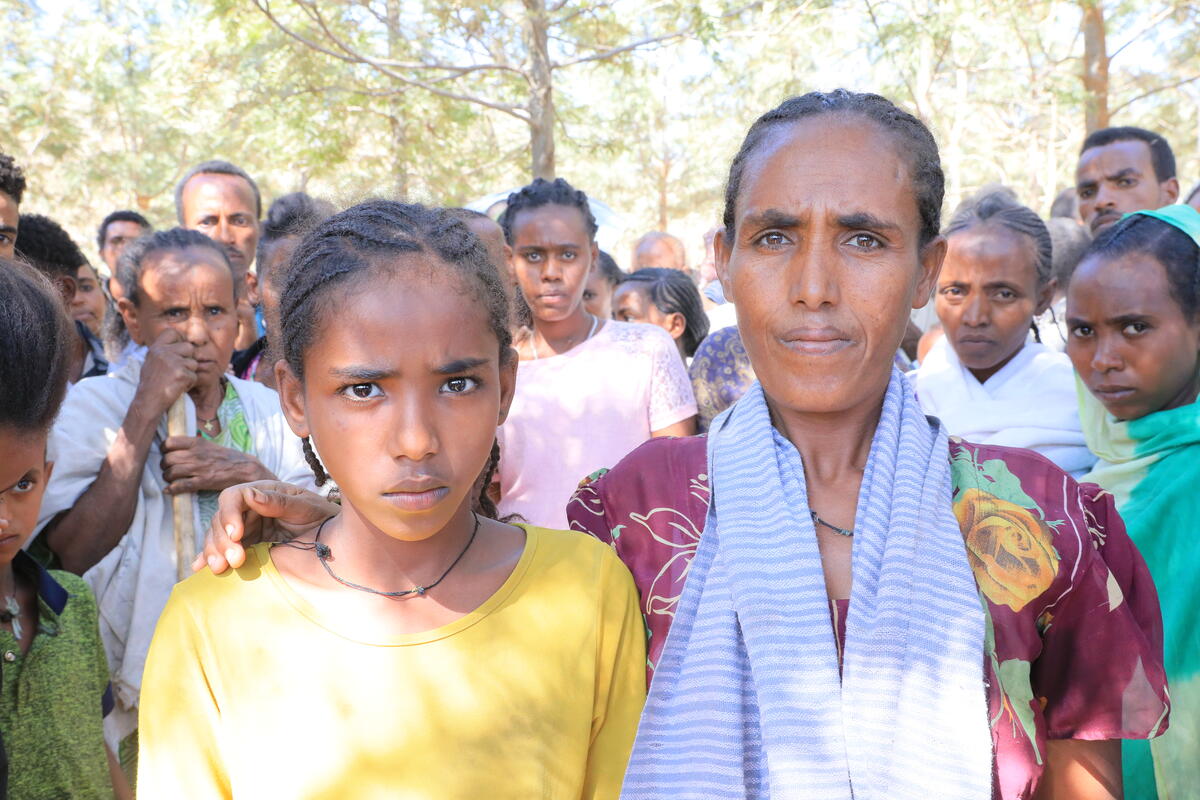
Fading dreams
Samrawit, 14, dreams of becoming a doctor when she grows up. Unfortunately, right now she is quite uncertain of what tomorrow holds, let alone her future career prospects. “I came here with my mother," she says. "We suddenly left our village when we heard a gunfire. I don’t know the whereabouts of my father,” she explains sadly.
“I need food to eat and to hug my beloved father,” says Samrawit.

